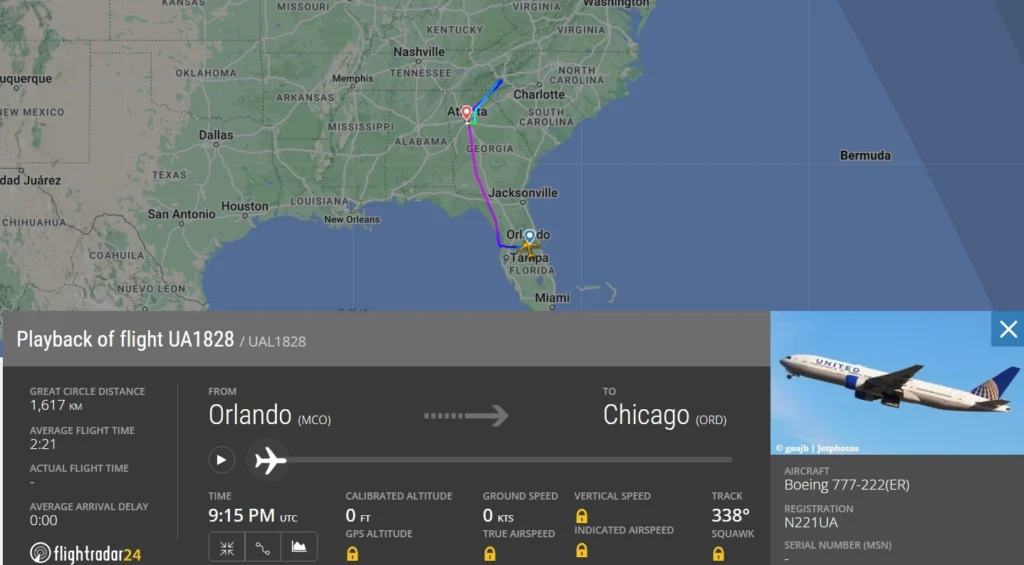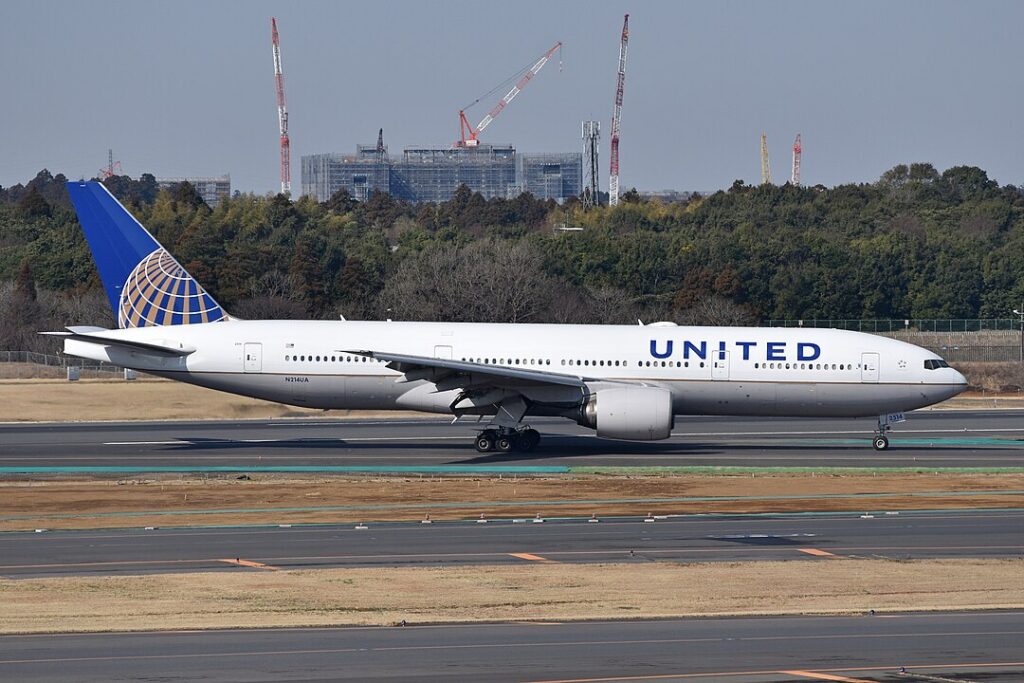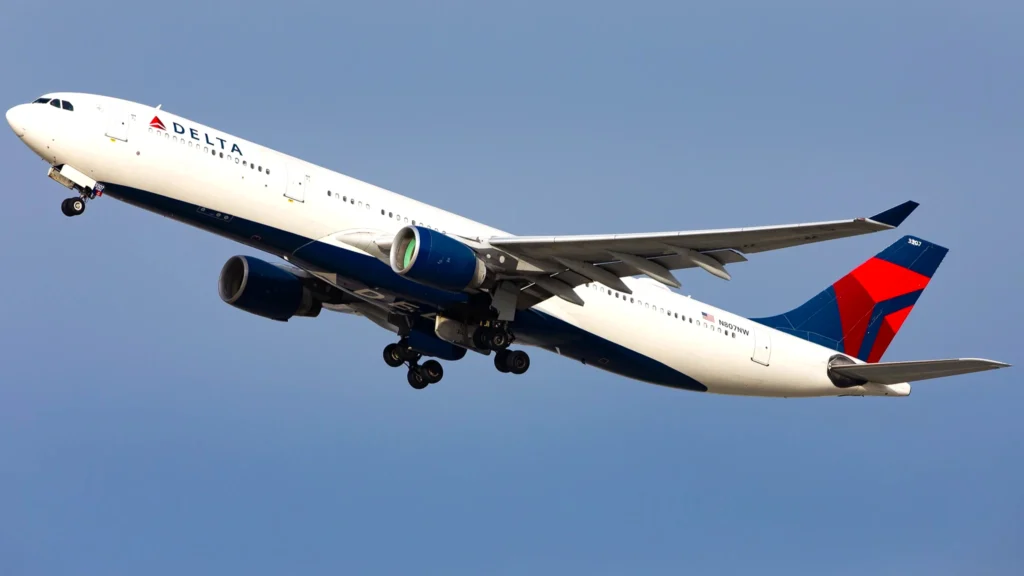
ATLANTA- Chicago-based United Airlines (UA) flight from Orlando (MCO) to Chicago O’Hare (ORD) operated by Boeing 777 reported engine failure mid-air and was diverted to Hartsfield-Jackson Atlanta International Airport (ATL) on January 3, 2025.
United Airlines operates over half a dozen flights between Chicago and Orlando using diverse narrow-body and wide-body fleets.
 Photo: FlightRadar24
Photo: FlightRadar24United 777 Engine Failure
The detail of the incident is shared by a passenger on the Reddit forum who wrote,
“During flight UA1828 Jan 3rd, 2025, the pilot announced we lost an engine (Boeing 777-200) and had to divert to Atlanta, 40 minutes later we landed. Obviously, an aircraft can fly on one engine, but during those 40 minutes, your mind sure does wander.”
According to FlightRadar24, United Airlines flight UA1828 took off from Orlando at 9:35 PM UTC. After being airborne for around one hour, the flight crew reported that they have lost one of the engines.
Following this they made a precautionary landing at Atlanta at 11:33 PM UTC. The passenger disembarked safely from the aircraft at Gate 17 in Concourse E.
The flight was operated by Boeing 777-200ER, registered as N221UA. Further, it is a 23.6-year-old aircraft powered by two Pratt and Whitney PW4000 engines.
United Boeing 777-200ER has a total of 362 seats including 32 First Class and 330 Economy Seats. However, the exact number of passengers onboard the flight is not known.
The airline changed the aircraft and it took off after 7 hours from Atlanta at 6:54 AM UTC and landed safely at Chicago at 8:30 AM UTC.
 Photo: By Alan Wilson, CC BY-SA 2.0
Photo: By Alan Wilson, CC BY-SA 2.0Diversion Protocols
Airlines implement strict protocols regarding diversion airport selection during emergencies, particularly in critical scenarios involving engine failures on twin-engine aircraft.
The industry mandates landing at the “nearest suitable airport” during specific non-normal conditions, prioritizing immediate safety over operational convenience.
The aviation sector defines the “nearest suitable airport” through comprehensive airline manuals and non-normal checklists. These documents specify requirements including adequate runway length, favorable weather conditions, and sufficient firefighting capabilities.
This definition explicitly excludes non-safety considerations such as maintenance facilities, backup aircraft availability, or passenger service infrastructure.
Most mechanical diversions operate outside the “nearest suitable airport” mandate, even when declaring emergencies. Airlines permit diversions to airports with maintenance and customer service capabilities during less severe mechanical issues. However, specific scenarios trigger mandatory “nearest suitable” criteria, including twin-engine aircraft experiencing engine failure, uncontrollable fires, or critical electrical system failures.
 Photo: Clément Alloing
Photo: Clément AlloingSimilar Incidents
Air India Flight AI2820, operating from Bengaluru to Delhi, experienced an engine stall on January 5, 2025. The incident involved an Airbus A320 aircraft, formerly operated by Vistara, registered as VT-TQE. The 3.8-year-old aircraft utilizes CFM LEAP-1A engines.
Delta Air Lines encountered a significant incident when flames were seen from an A330 aircraft engine during its takeoff from Atlanta International Airport bound for Sao Paulo on January 1, 2025. The airline transferred 257 passengers to a replacement aircraft, resulting in a five-hour arrival delay at their Brazilian destination.
American Airlines Flight 1722 executed an emergency landing at JFK Airport on November 13, 2024, following a bird strike incident after departing LaGuardia Airport. The Charlotte-bound aircraft suffered engine failure and subsequent fire when a bird collided with the engine during the initial climb phase.
Featured Image By Clément Alloing | Flickr
Stay tuned with us. Further, follow us on social media for the latest updates.
Join us on Telegram Group for the Latest Aviation Updates. Subsequently, follow us on Google News
United Flight Makes Emergency Landing at Denver Amid 737 Cracked Windshield
The post United Airlines Boeing 777 Experience Engine Failure Mid-Air, Diverted to Atlanta appeared first on Aviation A2Z.
















